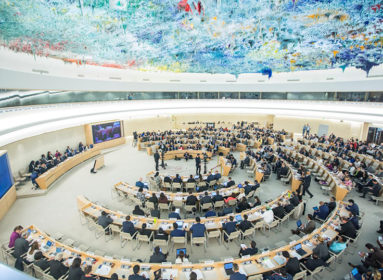
Dr. Rafael Medoff
By Dr. Rafael Medoff
Seventy years ago this week, at a back table in a dusky Manhattan restaurant, a Jewish revolution was born.
Six remarkable young men, recently arrived from Europe and Palestine, gathered to plan the strategy of a Jewish political action campaign that would reshape America’s response to the Holocaust and contribute to the struggle for the creation of Israel.
Ze’ev Jabotinsky, the fiery leader of the Revisionist Zionist movement, had sent them to the United States on a mission. “When World War II began [in September 1939], Jabotinsky realized that the center of political power was shifting from London to Washington,” Prof. Benzion Netanyahu, one of the six, told me in an interview. “Our task was to convince Americans to support Zionism and the rescue of European Jewry.”
The group’s leader, 26 year-old Hillel Kook, had been active in the effort by the Irgun Zvai Leumi, the Palestine Jewish underground, to smuggle Jews out of Europe in 1938-1939. Three of the others, Yitshaq Ben-Ami, Alex Rafaeli, and Eri Jabotinsky (son of the Zionist leader) had likewise been involved in what “Death Be Not Proud” author John Gunther called “Jew-smuggling.” The fifth member of this inner circle, Samuel Merlin, had been editor of the Irgun’s Yiddish newspaper, “Die Tat.” Netanyahu, father of Israel’s current prime minister, had edited HaYarden, the Revisionist Zionist daily in Palestine.
In early 1940, they organized mass rallies in New York to promote creation of a Jewish army to fight alongside the Allies against the Nazis. After two thousand years of Jewish powerlessness, the idea of a Jewish fighting force seemed radical to some but logical to many others. Their efforts were endorsed by members of Congress, prominent intellectuals, and numerous Hollywood celebrities.
Jabotinsky’s death that year dealt a blow to the activists. But by July 1941 they had regrouped and, over borscht and cigarettes in that Manhattan eatery, hatched plans to establish a Committee for a Jewish Army of Stateless and Palestinian Jews. (Netanyahu would break away the following year, in a tactical dispute.) The committee’s efforts, including placing full-page ads in the New York Times and other newspapers – an unorthodox tactic for Jews in America at the time – helped convince the British to establish the Jewish Brigade. Not only did the Brigade fight with distinction on the German front, but many of its veterans later put their military experience to good use in Israel’s 1948 War of Independence.
After news of the Nazi genocide reached the United States in late 1942, the activists who were popularly known as the Bergson Group established the Emergency Committee to Save the Jewish People of Europe and focused on the Roosevelt administration’s failure to aid Jewish refugees.
This was to be their finest hour.
At a time when everyone assumed Congress had no interest in Jewish problems, the Bergson rescue campaign attracted the support of key senators from states such as Iowa, Utah, and North Dakota, even though there were few Jewish voters there. “We found them on the merit of the cause,” Bergson remarked in a postwar interview with Prof. David S. Wyman.
At a time when many newspapers buried news of the Holocaust in their back pages, the Bergson Group turned the issue of Holocaust rescue into front page news with its dramatic rallies, including a march by 400 rabbis to the White House.
Most of all, at a time when President Roosevelt preferred to look away, the Bergson Group mobilized congressional pressure that helped convince FDR to establish the War Refugee Board, a government agency to rescued Jews from the Nazis. It played a key role in saving more than 200,000 Jews from Hitler.
As World War II approached its end, the Bergsonites created two new political action committees: the American League for a Free Palestine, to mobilize support for creating a Jewish state, and the Hebrew Committee for National Liberation, to serve as a government-in-exile for Holocaust survivors in Europe and the Jews fighting for independence in British Mandatory Palestine. Their rallies, newspaper ads, and lobbying in Washington in 1945-1948 played an important role in generating public support for Jewish statehood.
Bergson and company made their share of enemies. Assimilated Jews were embarrassed by the group’s “brash” tactics, while rival Zionist factions regarded anyone connected to Jabotinsky as their enemy. Jewish leaders feared Bergson was usurping their positions of power. Some even asked the Roosevelt administration to “draft or deport” Bergson.
This deep resentment may help explain why history books and Holocaust museums long ignored the Bergson Group. But times are changing. Today’s generation is not moved by the political quarrels of the 1940s. New books, films, and plays are telling Bergson’s story. The United States Holocaust Memorial Museum recently added Bergson materials to its permanent exhibit, and Yad Vashem will host an international symposium on the Bergson Group on July 17 in Jerusalem. Better late than never, the Bergson Group is at last attaining the recognition it has long deserved.
Dr. Rafael Medoff is director of The David S. Wyman Institute for Holocaust Studies, www.WymanInstitute.org








 Southern New England Jewish Ledger
Southern New England Jewish Ledger









